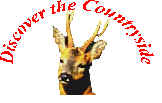
Discover The
Countryside !

The Fascinating World Around Us -
An Introduction to British Wildlife and Habitats, for
Adults
|
Sorry folks! This course is not currently being offered but may resume in due course. |
COURSE ACTIVITY LIST - CONTINUED
Activity |
Outline |
||
|
The
history of Devon looked at with an environmental focus, over a geological time scale of
millions of years. For example:
The activity will also take a brief look at the geology of the area with particular reference to the effect this has on the landscape and wildlife.
More clues of the countryside. |
||
|
A look
at Humans and their interactions with the local landscape, from Neolithic times to the
present.
This is history from a variety of different angles, put together in a way you may never thought of before. |
||
|
Over
75% of ponds have disappeared over the last 50 years, with devastating effects on many
aquatic organisms. Dragonflies in particular have been badly affected. Ten percent of
British Dragonfly species have been become extinct in Britain over the last 25 years.
Creating a pond in your garden can be of very real benefit to aquatic species, as well as
providing an endless source of fascinating creatures to observe. This activity will tell you all you need to know about creating your own garden pond to provide maximum benefit for wildlife. Do's and dont's of position, depth and gradation, linings, what plants to use where and tips for overcoming problems such as algal growth. Then sit back and watch the wildlife find it! |
||
|
What
to do with an area of woodland.
|
||
(Image courtesy of B. Walker) |
Many animals are extremely secretive and difficult to locate. Or, they may be
very small and difficult to spot in amongst vegetation. So how do you find out what is
there? This activity will show you a variety of different ways of answering that question. For example:
Try your hand at using a variety of different sampling methods for a wide diversity of organisms. The activity will also offer a very brief look at how an ecologist would go about surveying habitats. |